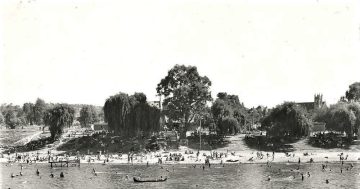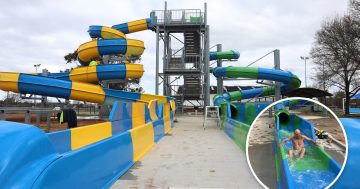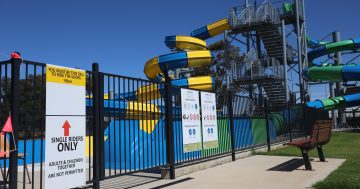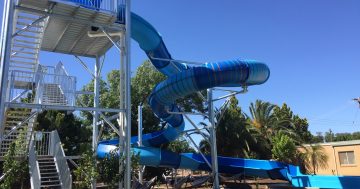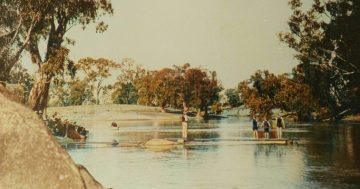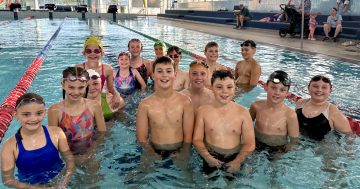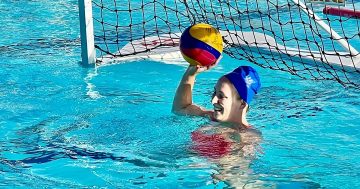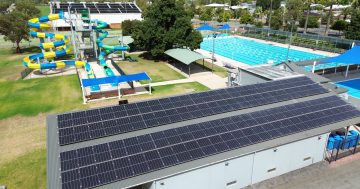
The Wagga Baths with its separate diving pool was once the envy of the Commonwealth. Photo: CSU Regional Archives.
This week the team from the Museum of the Riverina take us back to the pool and the once iconic Wagga Baths.
Officially opened on Saturday 28 November 1953, the old Wagga City Baths boasted not only an Olympic-sized pool and a children’s pool but also a diving pool that had one- and three-metre boards and five- and 10-metre platforms.
From opening day, the diving pool proved to be extremely popular with swimmers and thrill seekers.
During school holidays or on any weekend in summer, the boards were always in use with queues a common sight.
The city had long campaigned for a swimming pool and a ‘coupon’ appeared in a 1938 issue of The Daily Advertiser asking locals, ‘Are you in favour of swimming baths for Wagga?’ and invited readers to cut out and fill in the coupon and send it to their office.
But it seems the project was plagued with financial problems and a 1951 edition of the Riverine Grazier noted the “intense public interest in the delay over finishing the Wagga baths,” and suggested that the city council was looking at a “debenture loan from local citizens to raise the money required”.
In the same year, the Advertiser announced that “Wagga is to participate, together with two other country centres, in a £30,000 subsidy toward the completion of the swimming baths”.
The council it seems had been “cut off” from normal loan sources and had been about to shut down all work on the half-completed project.
“A city the size of Wagga not only should have baths. It must have baths!” the story breathlessly declared and called on local citizens to make private loans to the council.
“Not only would such people be earning the permissible interest on any money so invested, but they would also be doing their part as citizens to ensure that in the future the river claims no more lives.”
Once the money was raised and the long-awaited baths were opened in 1953, the newspaper heralded the “benefit to Wagga” of the newly opened baths and revealed that Kevin Newell, Australian high-board diving champion had taken a job in Wagga for a couple of months, so that he could practise at the Wagga pool.
“The Sydney pools are too crowded and, anyway, have no separate diving pool as Wagga has,” he said. During his tenure, he aimed to give tips on diving to Wagga lads who could benefit enormously from his example.
Just as the Olympic pool was viewed as a way to nurture Wagga’s competitive swimmers (giving them somewhere to train continuously), “already promising talent has been exposed” in the diving pool.
For their time, the Wagga Baths were said to be one of the most comprehensive and modern baths in the Commonwealth.
Image and information supplied by Museum of the Riverina curator Michelle Maddison with additional information from Chris Roe.







